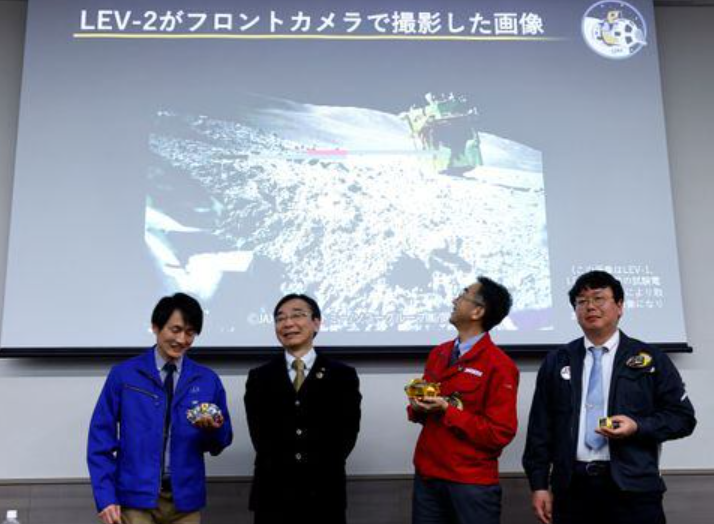
Japan's moon lander achieved an unusually precise touchdown within 100 m (328 feet) of its target, the space agency said on Thursday, after the nation became the fifth to put a spacecraft on the moon with the weekend touchdown of its SLIM probe.
Japan hopes the demonstration of what it called a "pinpoint" moon landing will revitalise a space programme seeking to overcome setbacks as it moves to capture a bigger role in space by partnering with ally the United States to counter China.
The Japan Aerospace Exploration Agency (JAXA) said it received all data about the touchdown of its Smart Lander for Investigating Moon (SLIM) within the 2 hours and 37 minutes before the lander lost power.
"We proved that you can land wherever you want, rather than where you are able to," its project manager for the lander, Shinichiro Sakai, told a press conference.
"This will inspire more and more people, desirably Japanese missions, to try to land on unexplored places on the moon."
One of the lander's two main engines probably stopped in the final phase of touchdown, so that it drifted 55 m (180 ft) away from the target site to an unintended position, Sakai said.
Read Japan's Slim makes soft moon landing, battles solar cell failure
In the absence of engine trouble, it could have landed as close as 3 m to 4 m (10 ft to 13 ft) from the target, he said.
The lander was toppled on the gentle slope of a crater on the moon's surface, in a picture, opens new tab published by JAXA and taken by a wheeled rover SLIM deployed during touchdown.
Angled westward because of the tumble, SLIM's solar panels have been unable to generate electricity, but a change in the direction of sunlight could power it up before the next lunar sunset on February 1 brings freezing cold.
"SLIM is not designed to survive a lunar night", said Sakai.
The power outage meant the lander's multi-band spectral camera, tasked to study the composition of moon rocks, could only generate low-resolution images, JAXA said.
Read In moon race with China, US setbacks test role of private firms
Moon sniper
The landing with an error of less than 100 m (330 ft) by SLIM, dubbed the "moon sniper", outstrips the conventional accuracy figure of several kilometres for lunar landers.
It employed "vision-based" navigation that JAXA says could be a powerful tool for future exploration of hilly moon poles seen as a possible source of fuel and life-giving water and oxygen.
Home to several private space startups, Japan aims to send an astronaut to the moon in NASA's Artemis programme in the next few years. But JAXA's recent setbacks in rocket development included the launch failure in March of its new H3 rocket.
That delayed many of Japan's space missions, including SLIM and LUPEX, a joint lunar exploration project with India, which made a historic touchdown on the moon's south pole in August.
In the past year, three lunar missions by Japanese startup ispace, Russia's space agency and American company Astrobotic have failed, but more lunar landers will head to the moon this year.
US startup Intuitive Machines aims to launch its IM-1 lander in mid-February.
China plans to send its Chang'e-6 spacecraft to the far side of the moon in the first half of the year, and NASA's launch of its lunar polar exploration rover VIPER is set for November.







1737530312-0/trump-disaster-(1)1737530312-0-270x192.webp)















COMMENTS
Comments are moderated and generally will be posted if they are on-topic and not abusive.
For more information, please see our Comments FAQ